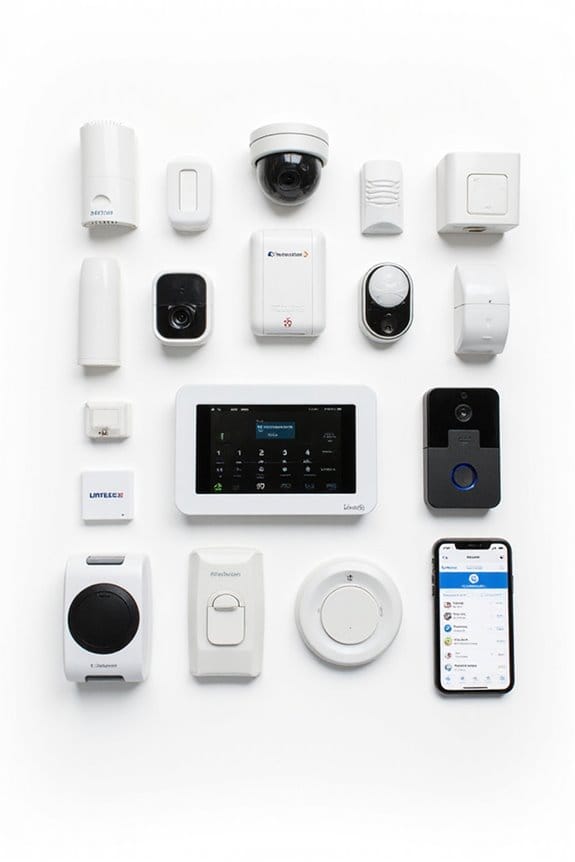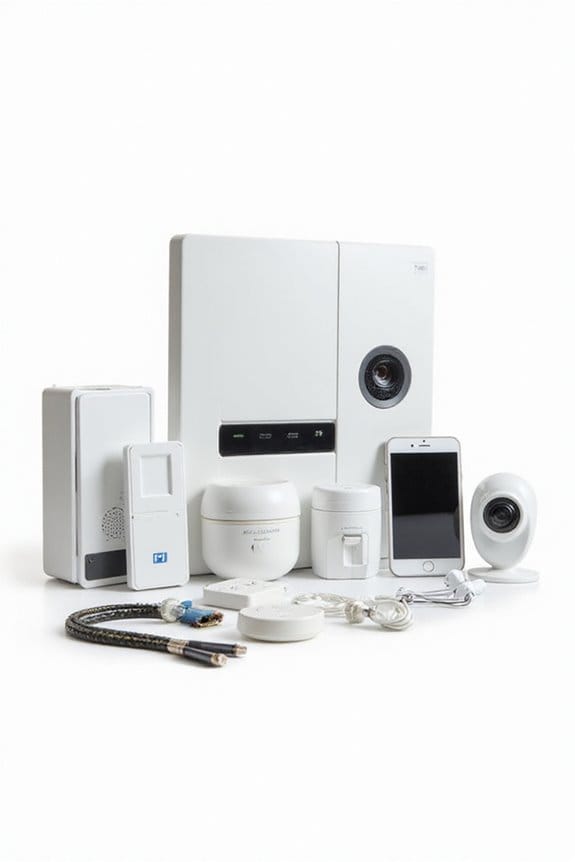When it comes to the best security system for homes, I’ve found that affordability and features are key. Here’s what to evaluate: 1) Basic kits start around $230, which is great for budgets. 2) DIY systems save on installation and keep things simple. 3) Look for quality equipment with smart features, like HD cameras. 4) Choose a flexible monitoring plan, preferably month-to-month. With these tips, you’re on your way to securing your home, and there’s more to explore!
Key Takeaways
- Look for home security systems with durable equipment, high-definition cameras, and multi-function sensors for comprehensive protection.
- Consider professional monitoring services for timely responses, while self-monitoring options can save costs and provide flexibility.
- Evaluate budget-friendly systems, typically ranging from $200-$300, to find a balance between cost and essential features.
- Opt for brands that offer easy DIY installation or flexible professional setups to suit your preferences and skills.
- Ensure compatibility with smart home devices for enhanced automation and real-time alerts, boosting security and convenience.
Cost and Affordability of Home Security Systems
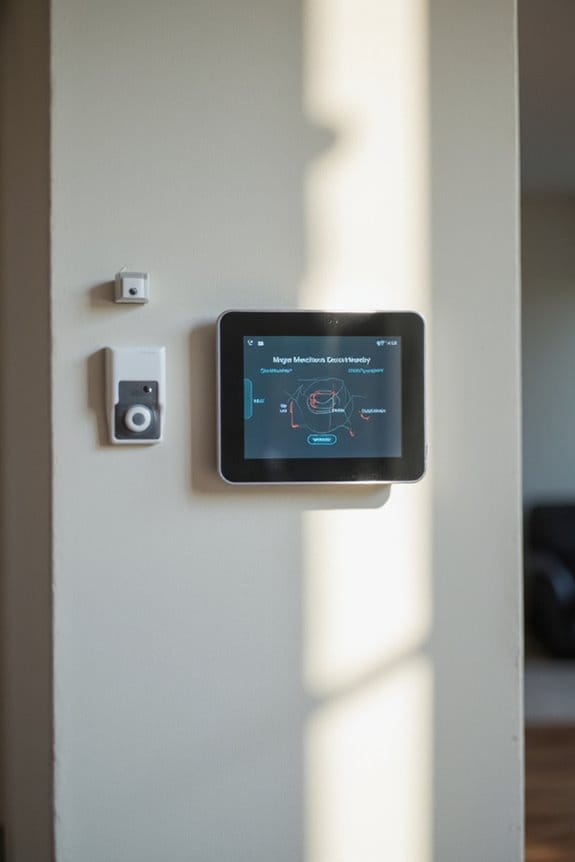
When it comes to home security systems, understanding the costs can feel a bit like maneuvering through a maze. Here are some budget considerations to keep in mind:
- Equipment Costs: Basic kits start around $230, while advanced systems can exceed $1,500.
- DIY vs. Professional: DIY options usually save you money on installation, but professional setups offer peace of mind.
- Monitoring Fees: Self-monitoring can be nearly free, while professional monitoring ranges from $10 to $100 monthly.
Cost comparisons help here. If you’re on a tight budget, aim for systems in the $200-$300 range. Setting a realistic budget before diving in will make your search easier and help you find the perfect fit without breaking the bank! Additionally, evaluating the long-term expenses of monitoring services can significantly impact your overall budget decision.
Installation and Monitoring Options
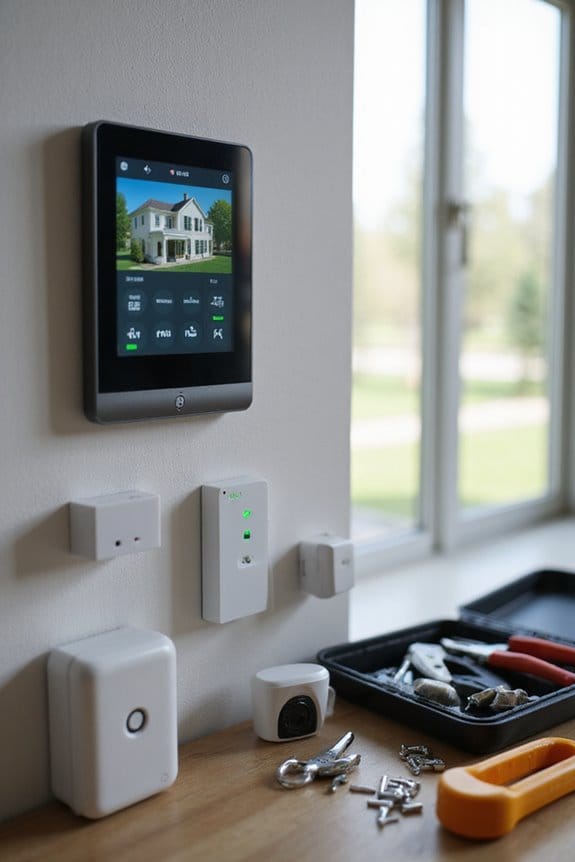
Now that we’ve laid out the costs of home security systems, it’s time to tackle how you can get them up and running. There are two main installation types:
- Professional Installation: A technician sets up your system, which often includes secure mounting options. It usually takes one to two hours, and fees can vary. Companies like ADT and Vivint offer this service.
- DIY Installation: Perfect for hands-on homeowners, this option allows you to install the system yourself, often taking under an hour. Brands like SimpliSafe and Ring provide clear instructions.
For monitoring preferences, you can choose professional monitoring for around $30/month or go for self-monitoring via smartphone apps. I recommend weighing convenience against cost to find what fits your lifestyle best! Additionally, many systems, such as SimpliSafe, offer flexible monitoring plans that cater to different needs and budgets.
Equipment Quality and Essential Features

While choosing a home security system, you’ll want to evaluate the quality of the equipment and the essential features that come with it. Here are some key points to reflect on:
- Equipment Durability: Look for robust materials that can withstand the elements. High-quality systems are built to last and often include anti-tamper features.
- Sensor Technology: Modern systems integrate multi-function sensors, detecting everything from motion to water leaks. Advanced models can even differentiate between pets and people, reducing those pesky false alarms.
- Camera Capabilities: Opt for high-definition cameras with night vision. They should offer wide-angle views and, if possible, pan-tilt-zoom functions for complete coverage. Many systems also provide high-definition video quality to ensure you capture clear images day or night.
Investing in quality equipment not only enhances security but also gives you peace of mind!
Monitoring Services and Contract Flexibility
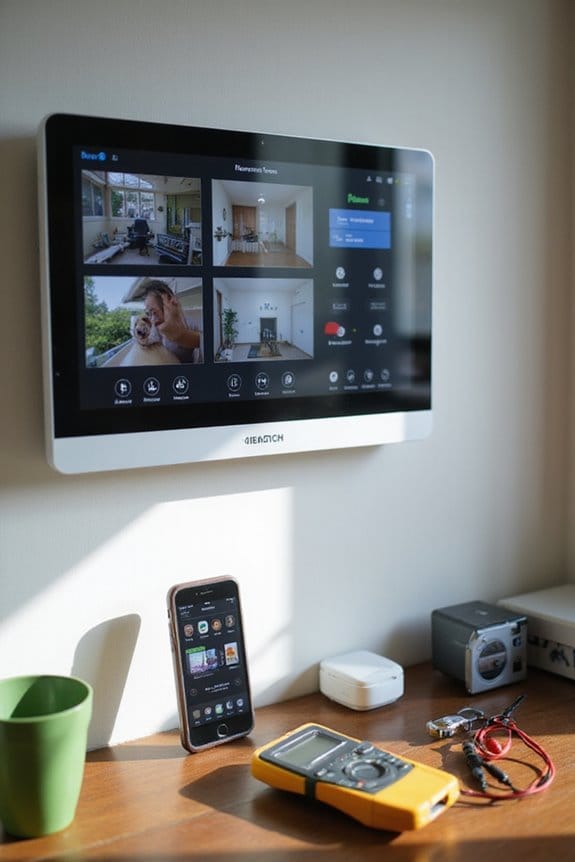
Choosing the right home security system doesn’t just stop at evaluating equipment quality; it also involves considering the monitoring services and contract flexibility that come with it. Here’s what I’ve found:
- Monitoring Options: You can choose professional monitoring for timely responses or self-monitoring for more control (and often lower costs). Some providers, like SimpliSafe, even let you switch plans easily without penalties.
- Contract Terms: Look for month-to-month contracts for flexibility, especially if you’re not ready for long-term commitments. SimpliSafe excels here, while others like ADT may lock you into longer agreements.
- Trial Periods: Many services offer free trials, letting you test the waters before diving in. It’s a smart way to guarantee you’re making the right choice!
Smart Home Integration and Automation Benefits
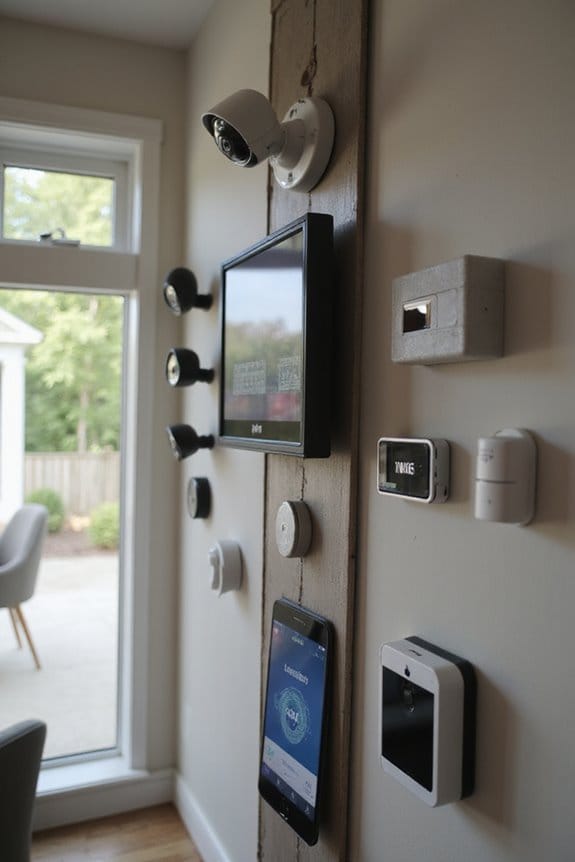
When it comes to enhancing your home’s security, integrating smart technology can truly elevate your experience. Here are some benefits I think you’ll appreciate:
- Customization Options: You can tailor security features to fit your needs, ensuring maximum protection.
- Convenience: Manage everything from one app—talk about a time-saver!
- Real-Time Alerts: Get instant notifications for any suspicious activity.
However, be aware of potential integration challenges. Different devices sometimes play hard to get, leading to compatibility issues. Still, the benefits often outweigh the hassles! Plus, as the market grows, systems are becoming more user-friendly. So don’t hesitate; upgrading to smart home security could be a game changer for your peace of mind and may even boost your property value! Additionally, consider systems that offer expandable features to adapt to your evolving security needs.
Frequently Asked Questions
How Do I Choose Between DIY and Professional Installation?
When weighing your options, it’s best to look closely at cost comparison and installation time. If you’re handy, DIY might save you bucks, but professional installation can save you headaches down the line.
What Happens if My Security System Loses Power?
If my security system loses power, I’d rely on power backup solutions. Regular system maintenance is essential to guarantee everything runs smoothly during outages, so I always check my backups to keep my home secure.
Can I Take My Security System With Me When I Move?
When I moved last summer, I was thrilled to discover my security system’s portability. It felt like packing a piece of home with me. Now, I easily relocate my moving security setup without a hitch!
How Often Should I Test My Security System?
I believe regular checks are essential for system maintenance. I test my security system monthly, focusing on sensors and alarms, and I recommend others do the same to catch issues before they become serious problems.
What Should I Do if an Alarm Is Triggered Accidentally?
If an alarm triggers accidentally, I immediately inform the monitoring center to prevent a false alarm response. Staying calm and explaining the situation helps clarify things quickly, ensuring emergency services aren’t unnecessarily dispatched.



